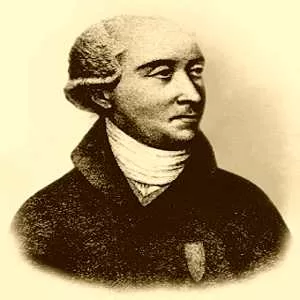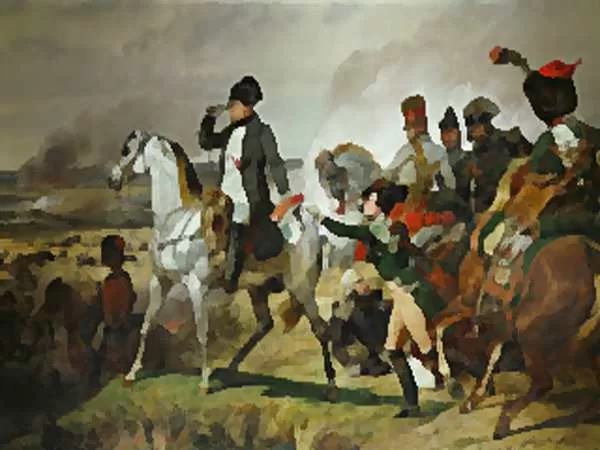Benjamin Bathurst, a British diplomat, vanished without a trace in 1809, and his disappearance remains one of the most perplexing mysteries of the 19th century. A man of prominence and connections, Bathurst’s story is filled with espionage, intrigue, and countless theories — but no definitive answers. This mystery, which has sparked speculation for over 200 years, continues to puzzle historians and armchair detectives alike.
Who Was Benjamin Bathurst?

Benjamin Bathurst was born on March 14, 1784, to Henry Bathurst, the Bishop of Norwich. At a young age, he entered the diplomatic service and quickly rose through the ranks, becoming the Secretary of the British Legation at Livorno, Italy. His career took a significant turn in 1809 when his relative, Earl Henry Bathurst, who was the Secretary of State for Foreign Affairs, dispatched him to Vienna to strengthen the British-Austrian alliance against Napoleon Bonaparte.
Although Bathurst’s mission was initially successful, with Austria declaring war on France, the Austrians were defeated at the Battle of Wagram in July 1809. With the mission effectively failed, Bathurst was recalled to London. Instead of taking the Adriatic Sea route, he chose a seemingly safer path through the neutral German states to Hamburg. Adopting the alias “Baron de Koch,” he traveled with his secretary, Herr Krause, who posed as a German courier named Fischer.
The Disappearance
On November 25, 1809, Bathurst and Krause stopped to change horses in Perleberg, a small town west of Berlin. The two walked to a nearby inn, The White Swan, where they had an early dinner. Bathurst, dressed in a gray frogged coat and a lavish sable-fur coat lined with violet velvet, appeared nervous and restless. He spent the afternoon burning papers and writing letters. Bathurst then contacted Captain Klitzing, commander of a squadron of Brandenburg cuirassiers, requesting guards as he feared for his safety.
Captain Klitzing, noticing Bathurst’s agitation, assigned two soldiers to guard him. Later that evening, Bathurst dismissed the guards and ordered horses to be ready by nine. When he went outside to oversee the loading of his luggage, he stepped to the horses’ heads — and then vanished.
The Immediate Aftermath
Krause, unaware of Bathurst’s disappearance, assumed he had returned to the inn or gone to seek more guards. An hour passed before an alarm was raised. Captain Klitzing launched an immediate search, including dragging the nearby river and combing the woods and marshes. Meanwhile, Krause was placed under guard and later escorted to England. Despite the urgency, no trace of Bathurst was found.

Bathurst’s wife, Phillida, arrived in Prussia soon after with her brother and a small party, desperately searching for clues. They found a sable-fur coat belonging to Bathurst in the possession of Auguste Schmidt, an ostler at The White Swan. Schmidt claimed his mother had taken the coat from the inn, but no one knew if it was before or after the disappearance.
The Mysterious Clues and Theories
Theories began to emerge. Some suggested Bathurst was abducted by French agents on orders from Napoleon, while others speculated he was murdered by local thieves or had a mental breakdown and took his own life. In 1852, a skeleton was discovered under a house in Perleberg that matched Bathurst’s description, but his sister dismissed it as not being his remains. Other skeletons found later in the area were also suspected to be Bathurst’s, but none were definitively identified.
One popular theory involves a French double agent, Comte d’Etraigues, who claimed that French cavalrymen had abducted Bathurst and taken him to Magdeburg Fortress, a French-controlled stronghold. However, when Bathurst’s wife contacted the Governor of Magdeburg, he denied any knowledge of the British diplomat’s presence. Mrs. Bathurst even met with Napoleon, who denied any involvement and offered assistance in finding her husband.
Some believed that local robbers, possibly including Auguste Schmidt, murdered Bathurst for his valuable belongings, while others thought he might have been killed by his own valet, Mertens, or that the two men conspired together. Captain Klitzing always maintained that Bathurst was murdered for his possessions.
The Espionage Angle
Given the political context, espionage cannot be ruled out. Bathurst was traveling with sensitive information that could have been valuable to both French and Russian agents. D’Antraigues, a known double agent, was mentioned in a letter Bathurst wrote to his wife, expressing fears that D’Antraigues would cause his demise. Could D’Antraigues have orchestrated a plot against Bathurst? Or was Bathurst simply a casualty of the murky world of 19th-century espionage?
Unanswered Questions
Despite numerous theories, the mystery of Benjamin Bathurst remains unsolved. Was he kidnapped by French agents for state secrets, or did he fall victim to a local crime? Could he have suffered a mental breakdown or crossed into another dimension, as some have whimsically suggested?
In 1815, Earl Bathurst, Benjamin’s relative, had a personal and professional moment of satisfaction when he sent Napoleon into exile on St. Helena. The Bathurst family always believed that the French were behind Benjamin’s disappearance. However, without concrete evidence, the truth remains elusive.
Conclusion: The Legacy of the Disappearance
Benjamin Bathurst’s story has fascinated and baffled historians for over two centuries. The lack of definitive answers only adds to its allure, making it one of the great unsolved mysteries of history. While the truth may never be known, Bathurst’s disappearance serves as a reminder of the intrigue and danger that marked the age of empires and espionage.
If you enjoy historical mysteries, Bathurst’s case offers a tantalizing puzzle that remains open to interpretation. Was it espionage, theft, madness, or something far stranger? You decide.

